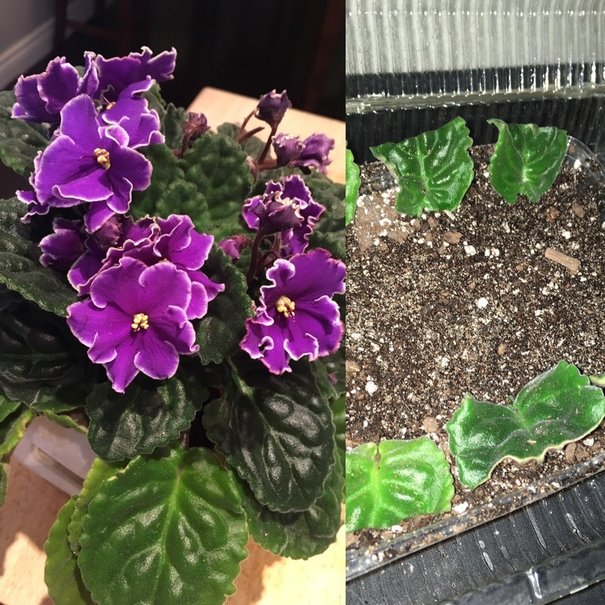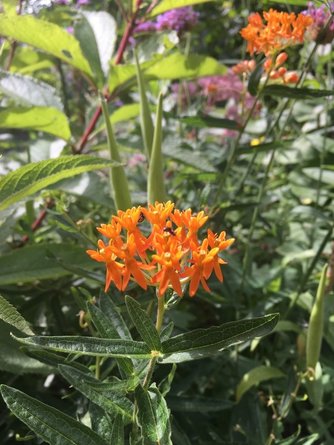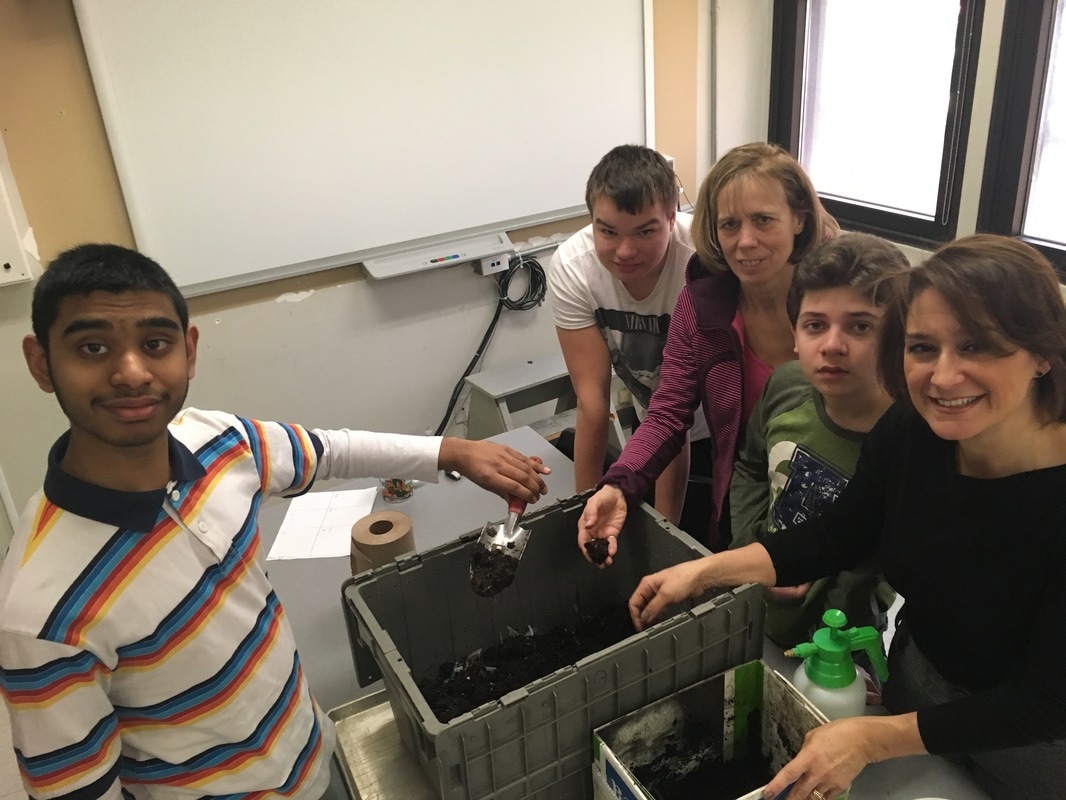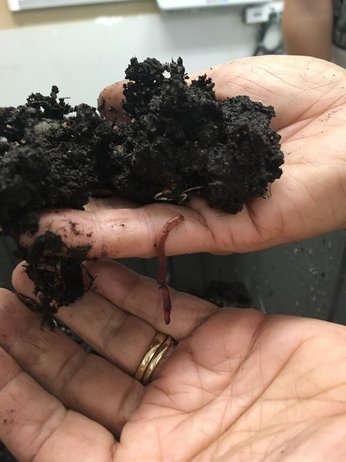African violets --those fuzzy-leaved, purple or pink flowered tropicals--are among the most popular houseplants around. My grandmother's house always had collection of African violets growing under fluorescent lights. Mine sit on a kitchen windowsill above the sink, and although they are a little finicky about soil and sunlight, I have found that they are surprisingly easy to grow. The best thing about them is that if you provide their basic needs they will bloom all year long and brighten the darkest of winter days. So after a little research online and in old textbooks, I decide that starting African violet plants would be a fun project for Resource kids this week. It really wasn't difficult to do, but will require a little patience since plants need a few weeks before babies will emerge.
We started by first carefully cutting a few select leaves off the middle part of the mother plant, a ruffled, purple African violet given to me as a gift that has been growing really well in my kitchen window- a bright, humid area with little direct sun. Once the violet leaves were severed from the mother plant with about a one inch length of stem attached, I carefully sliced the stem lengthwise (to have more rooting surface and because that's what my research told me to do) and inserted stems into moist, coarse rooting medium. The potted leaf cutting container were then placed into an old plastic mini 'greenhouse' from the grocery store that was used for croissants. (Recycled trash is treasure!)
If we planted them correctly and we continue to monitor the rooted leaf cuttings, we may in fact have a bunch of new African violet babies ready by springtime.
(for more on African violets and their care, check the African Violet Society's website at: http://www.avsc.ca/index.htm)
We started by first carefully cutting a few select leaves off the middle part of the mother plant, a ruffled, purple African violet given to me as a gift that has been growing really well in my kitchen window- a bright, humid area with little direct sun. Once the violet leaves were severed from the mother plant with about a one inch length of stem attached, I carefully sliced the stem lengthwise (to have more rooting surface and because that's what my research told me to do) and inserted stems into moist, coarse rooting medium. The potted leaf cutting container were then placed into an old plastic mini 'greenhouse' from the grocery store that was used for croissants. (Recycled trash is treasure!)
If we planted them correctly and we continue to monitor the rooted leaf cuttings, we may in fact have a bunch of new African violet babies ready by springtime.
(for more on African violets and their care, check the African Violet Society's website at: http://www.avsc.ca/index.htm)




 RSS Feed
RSS Feed
